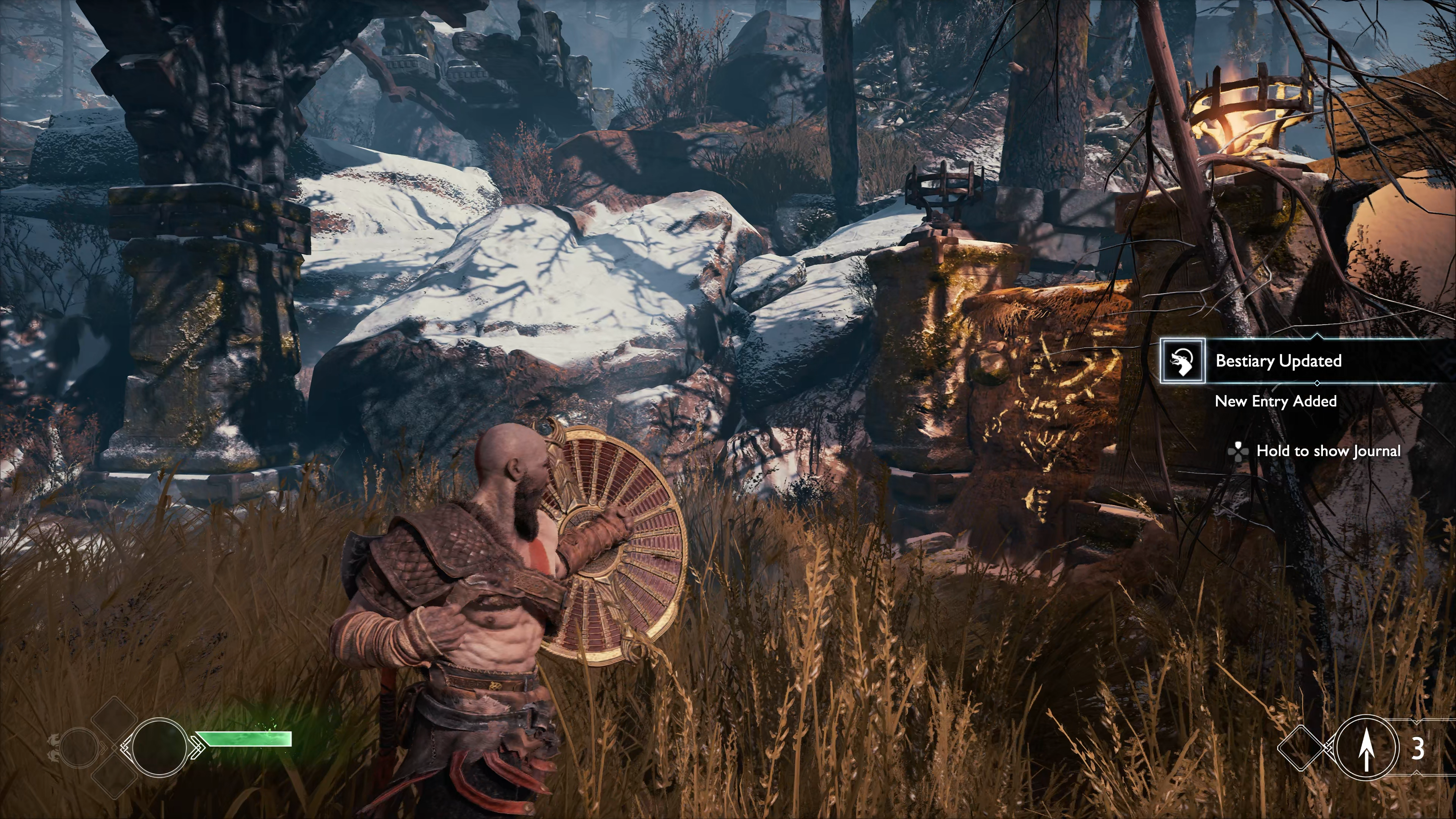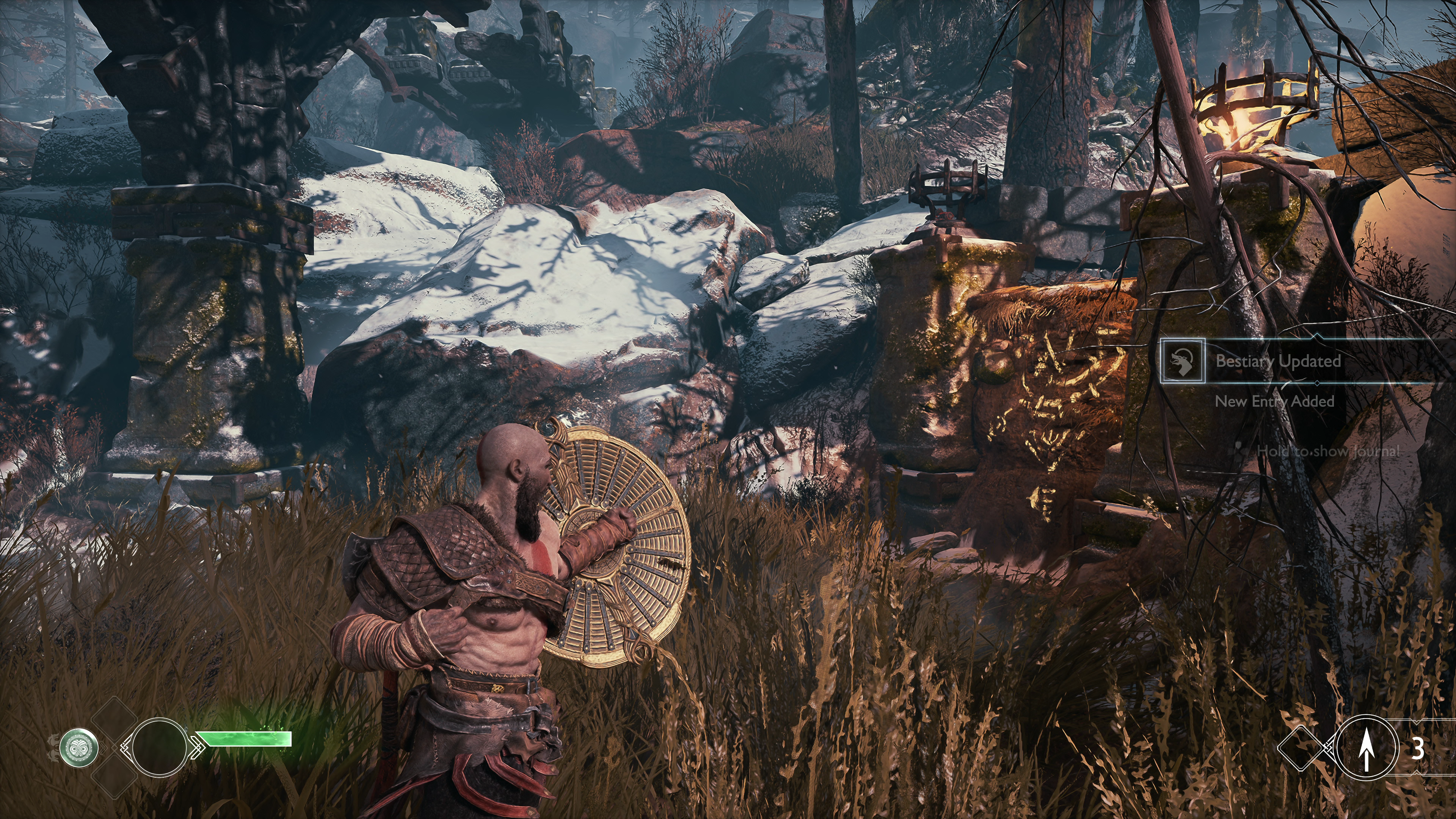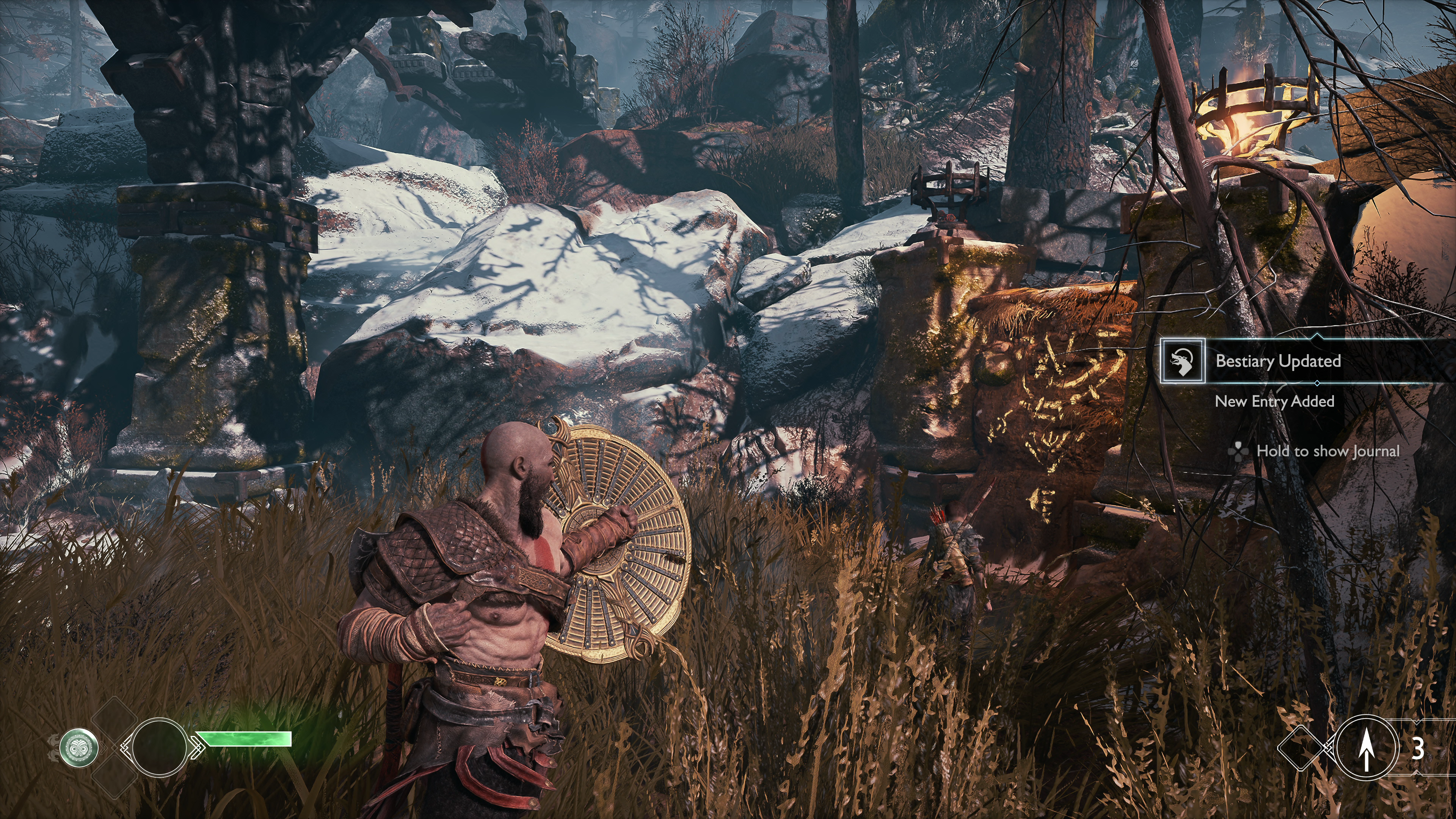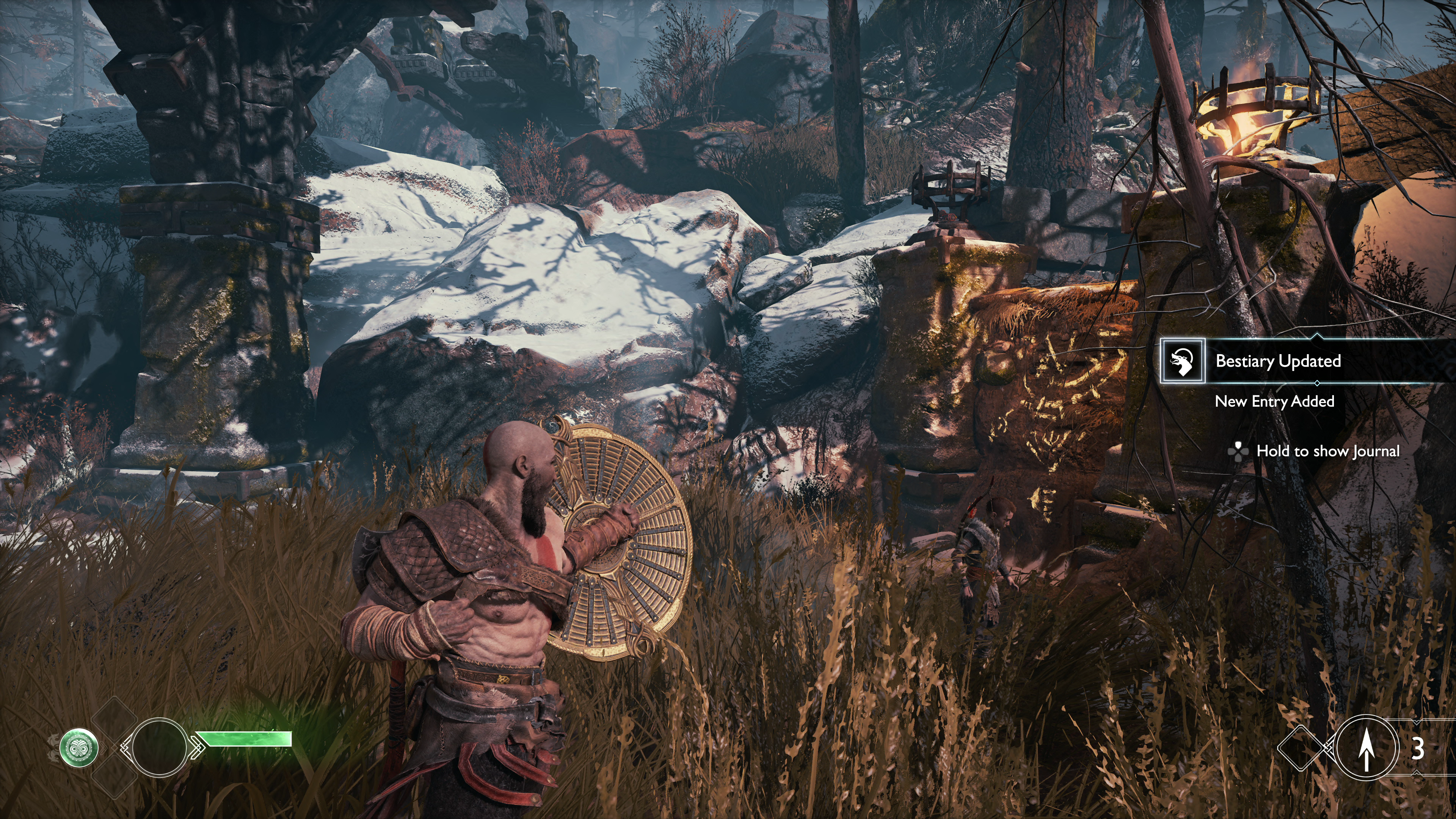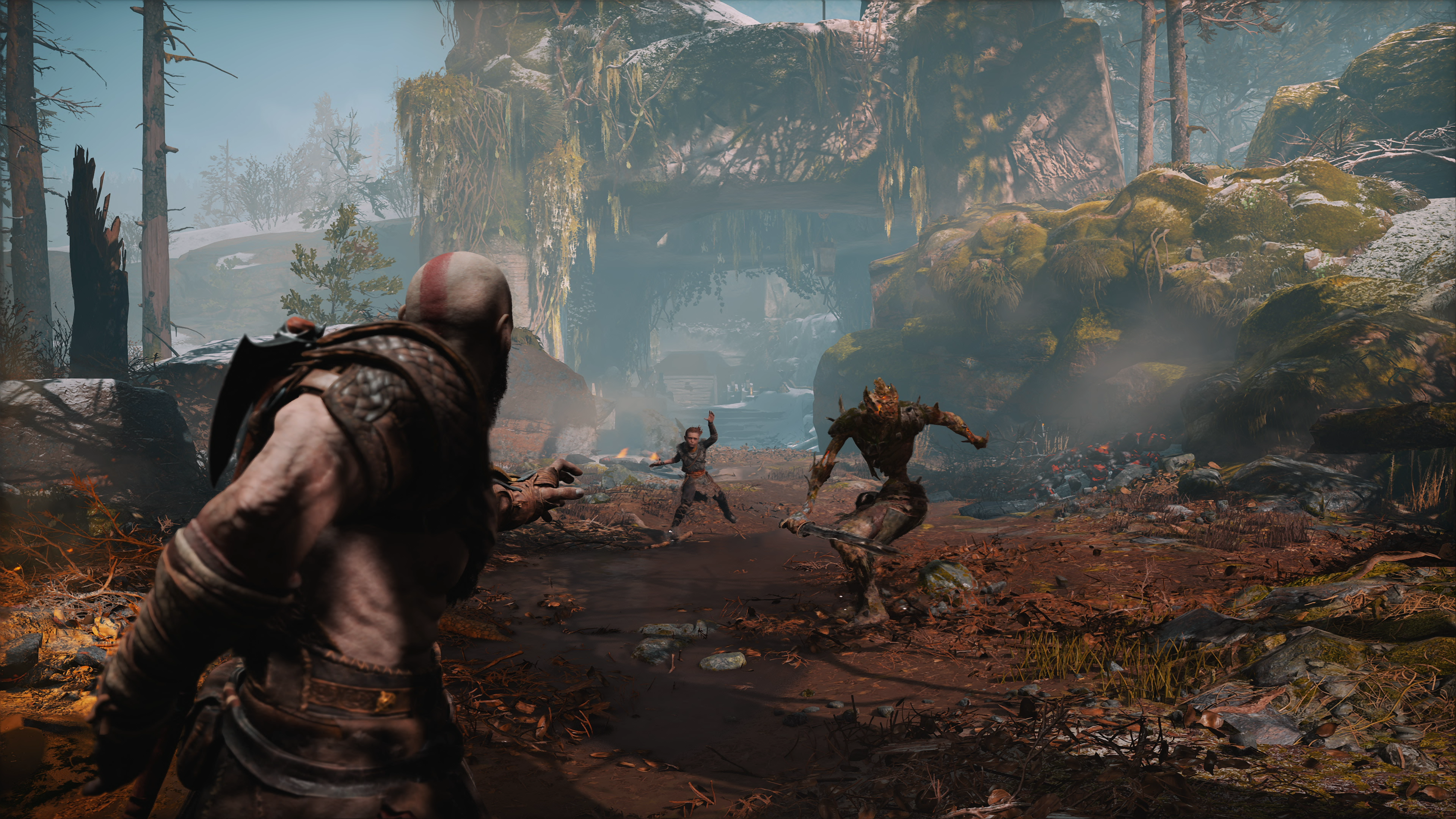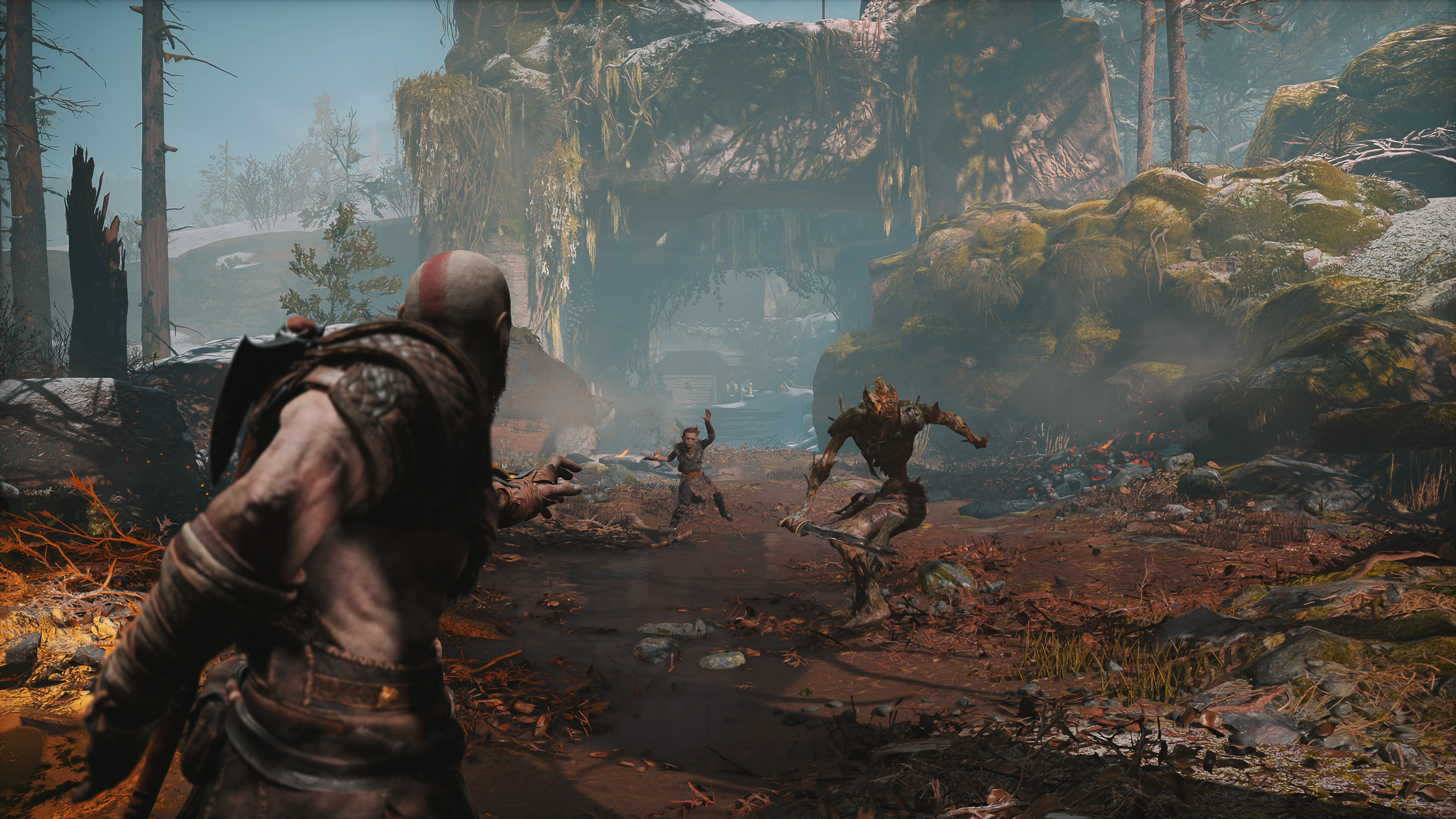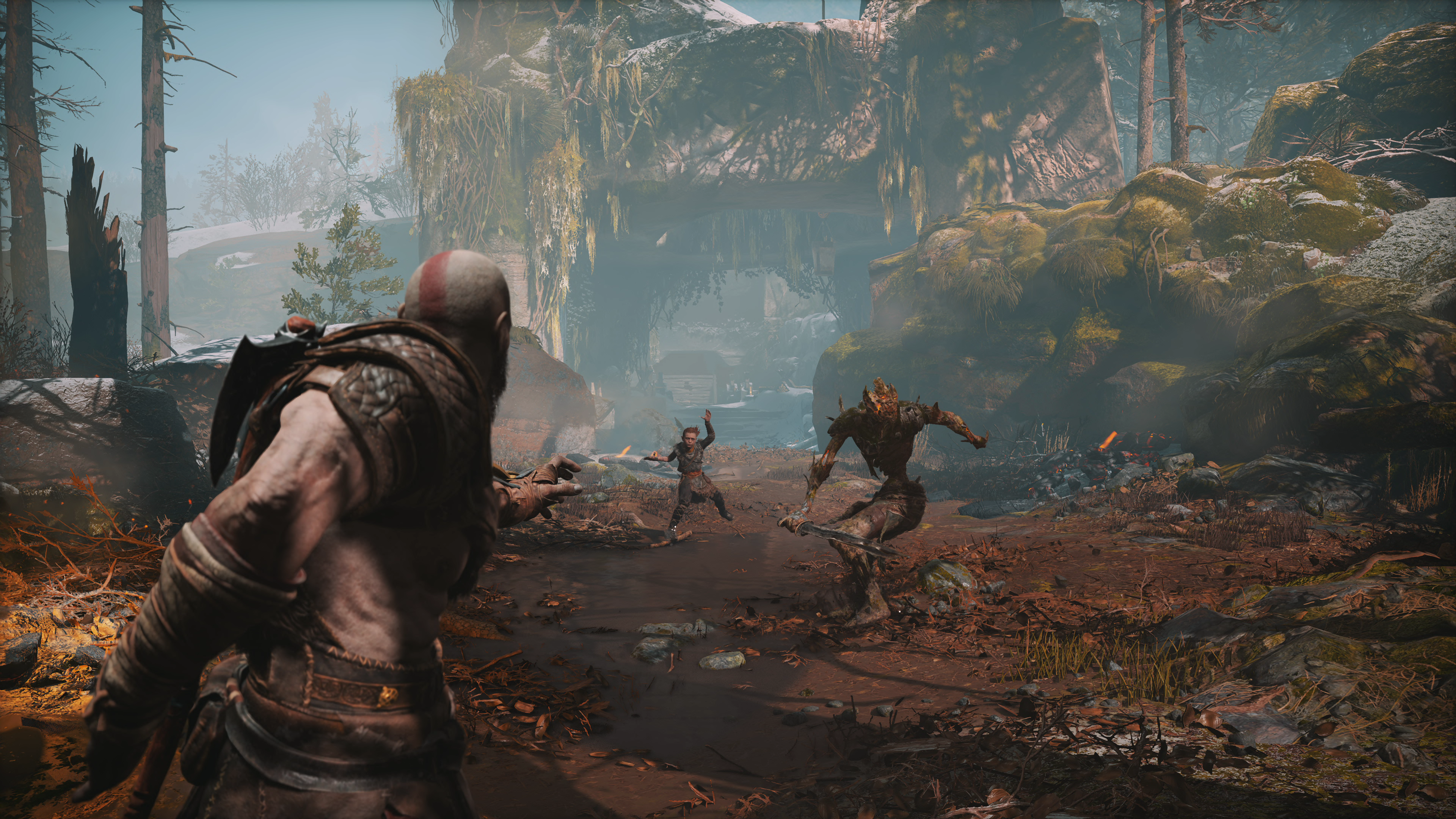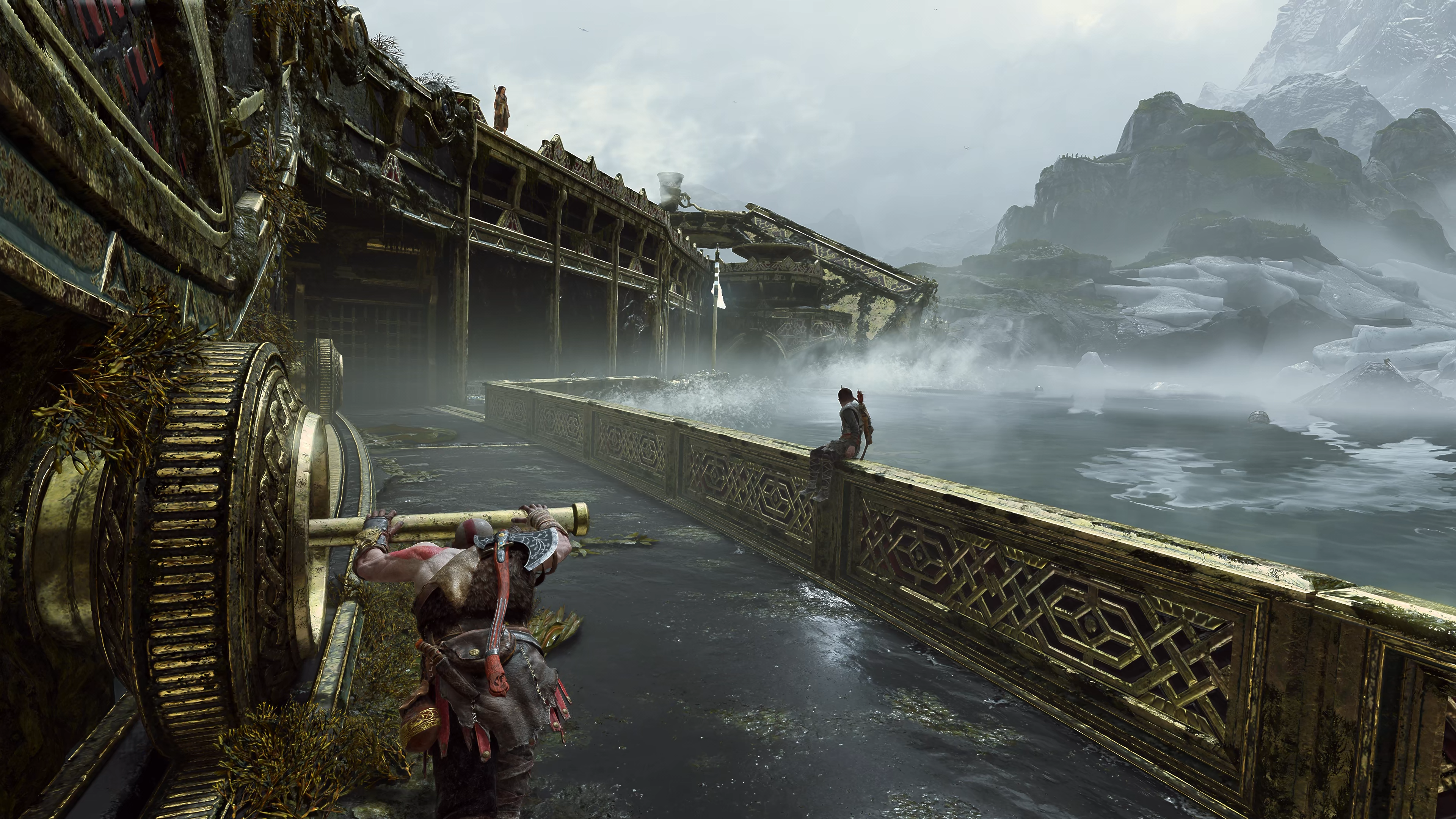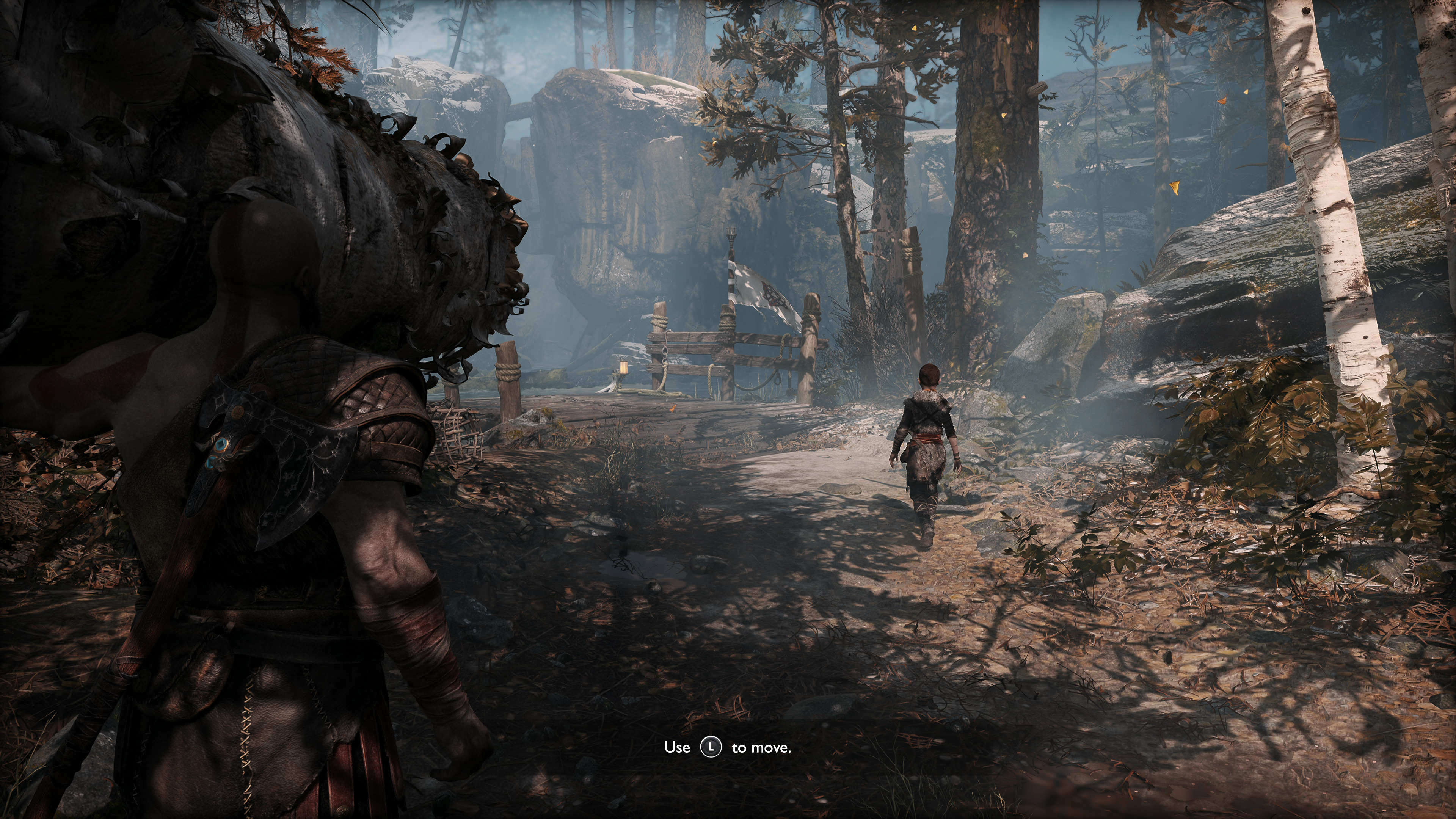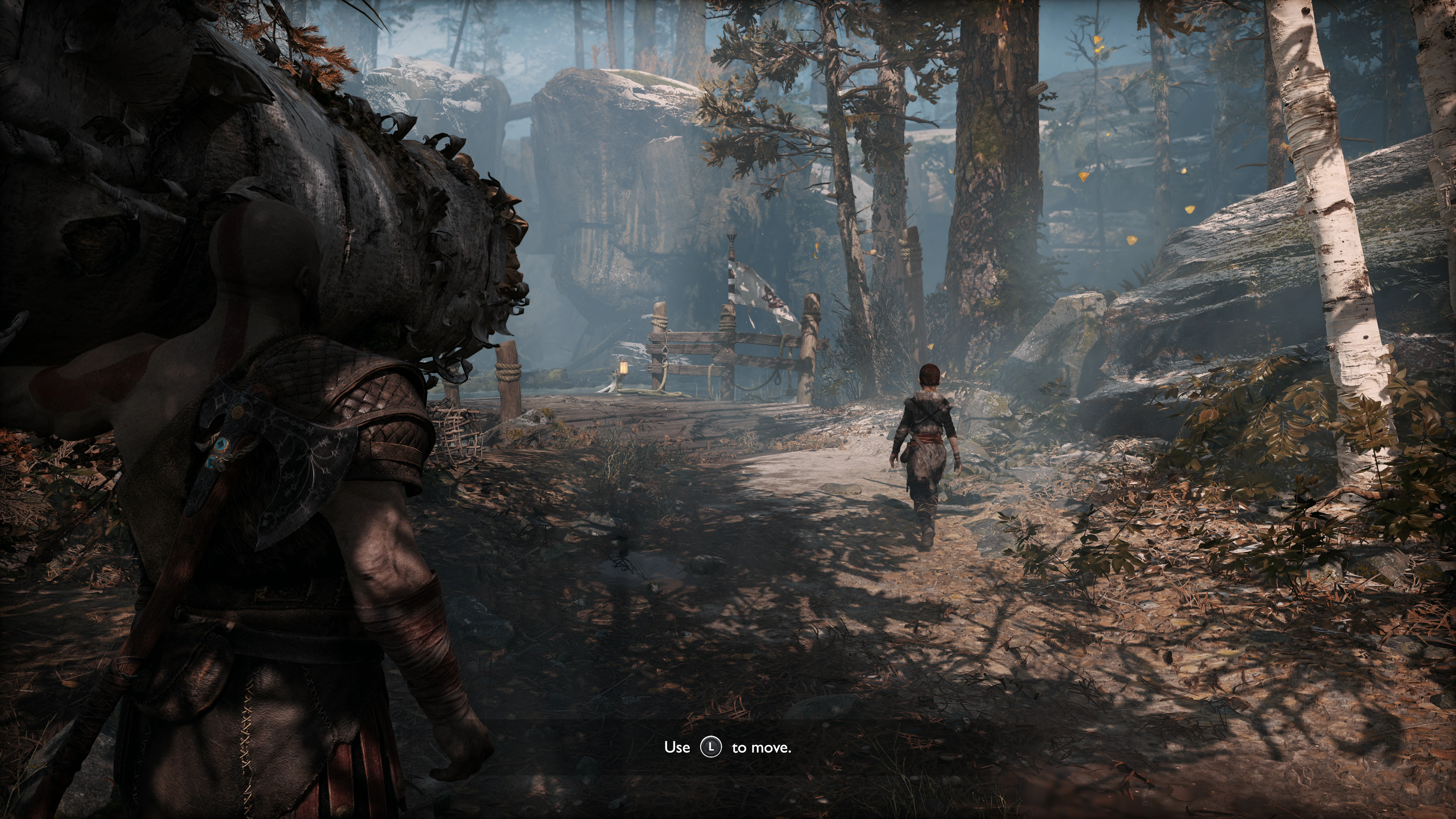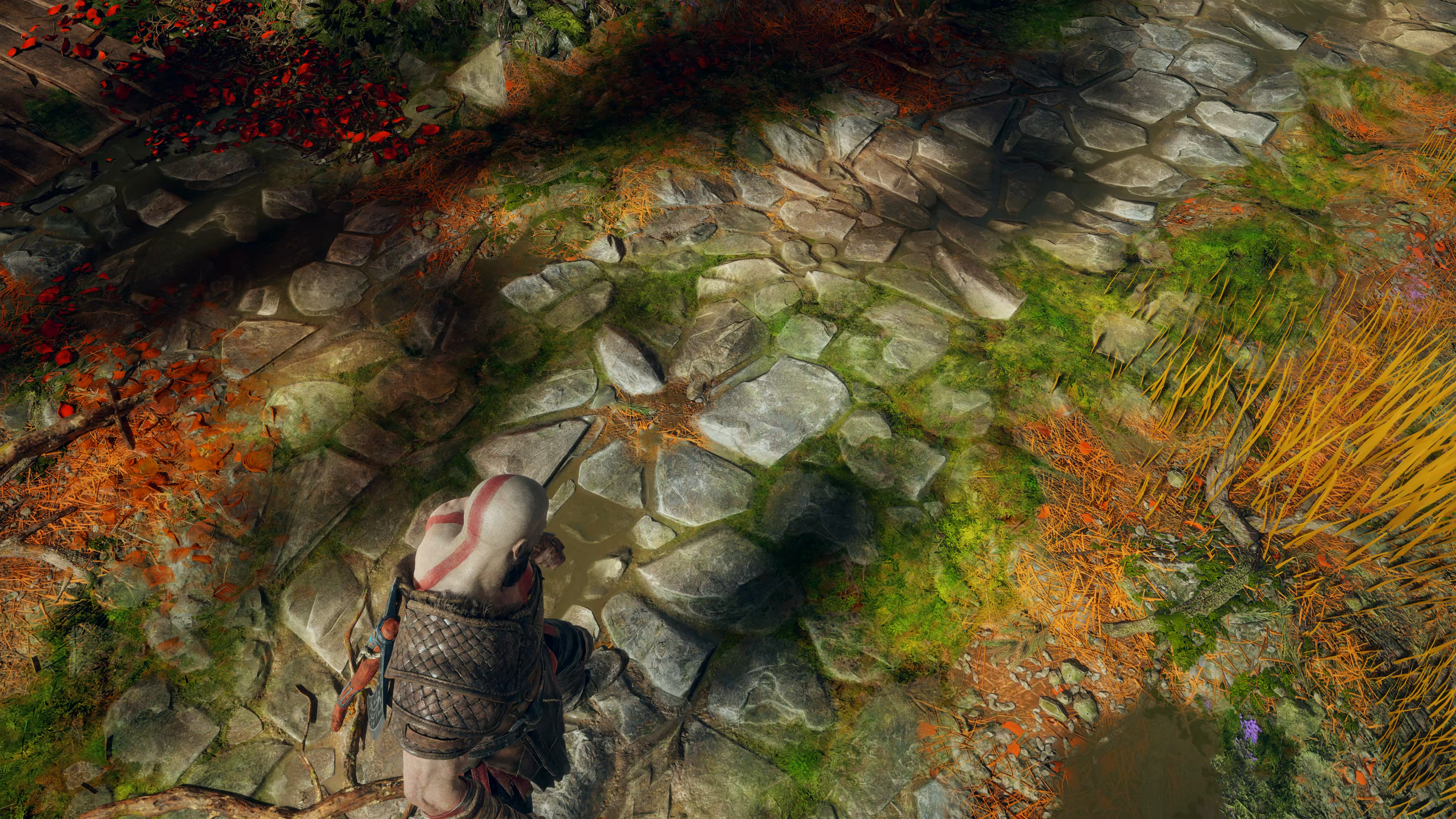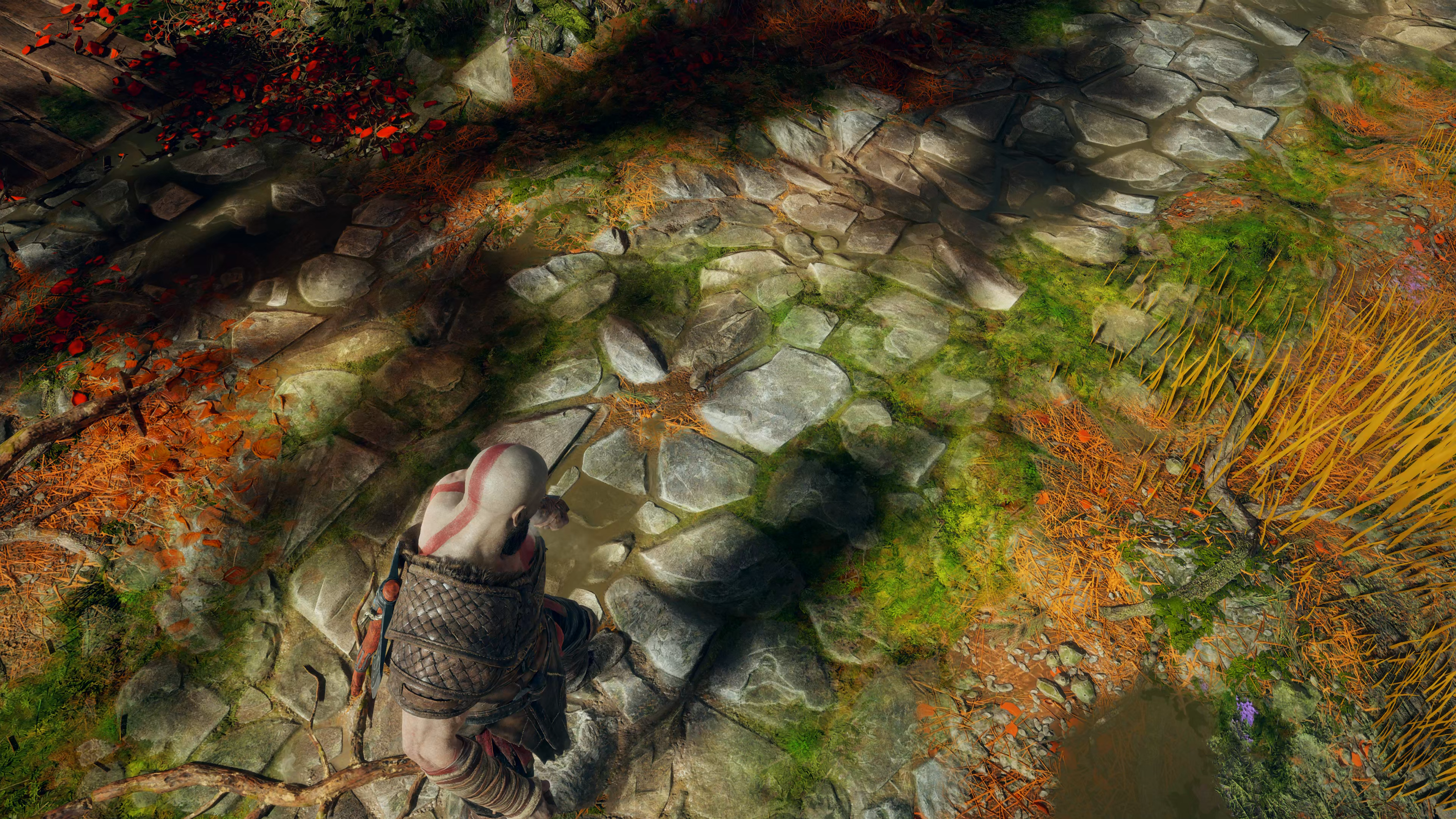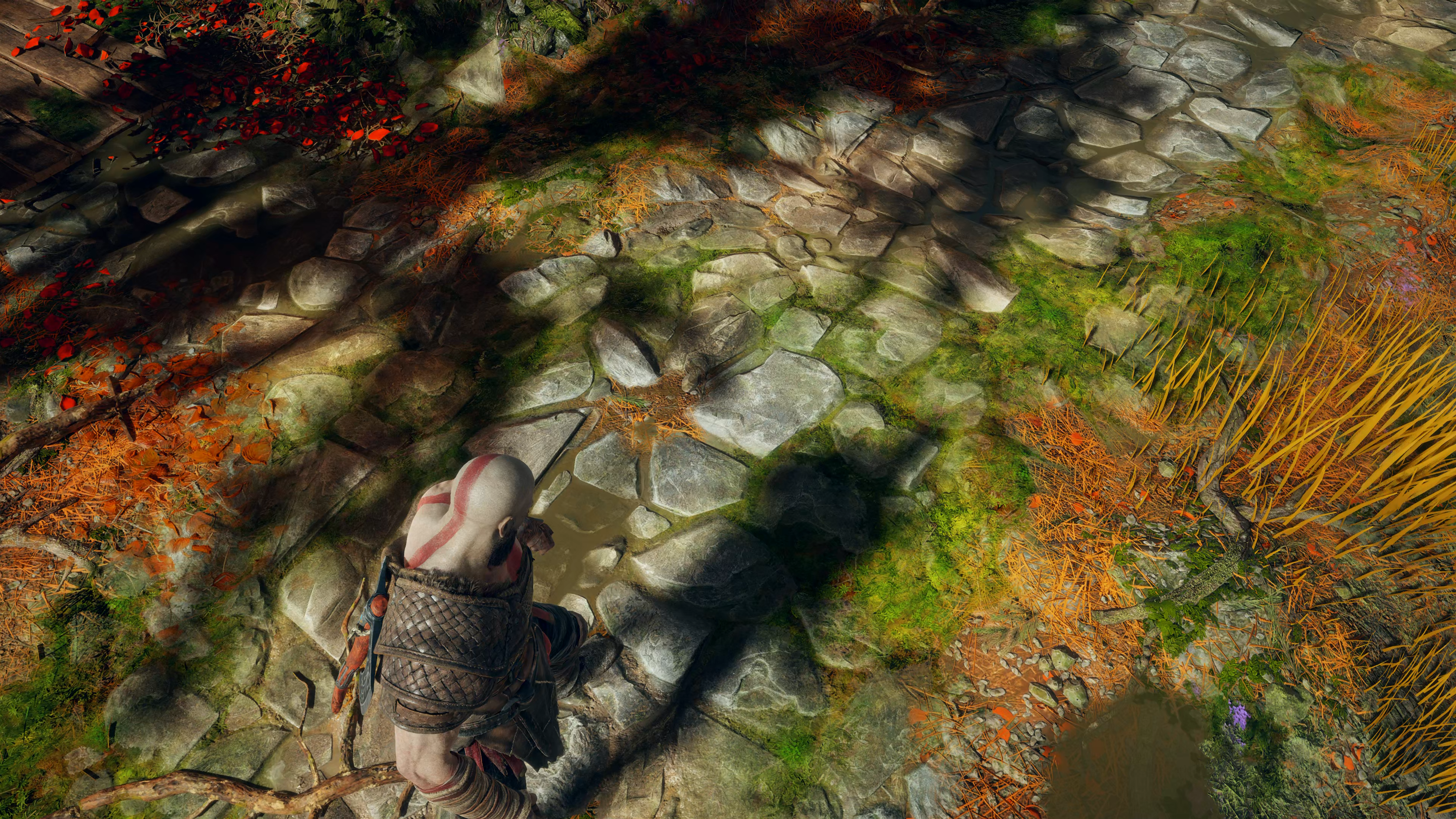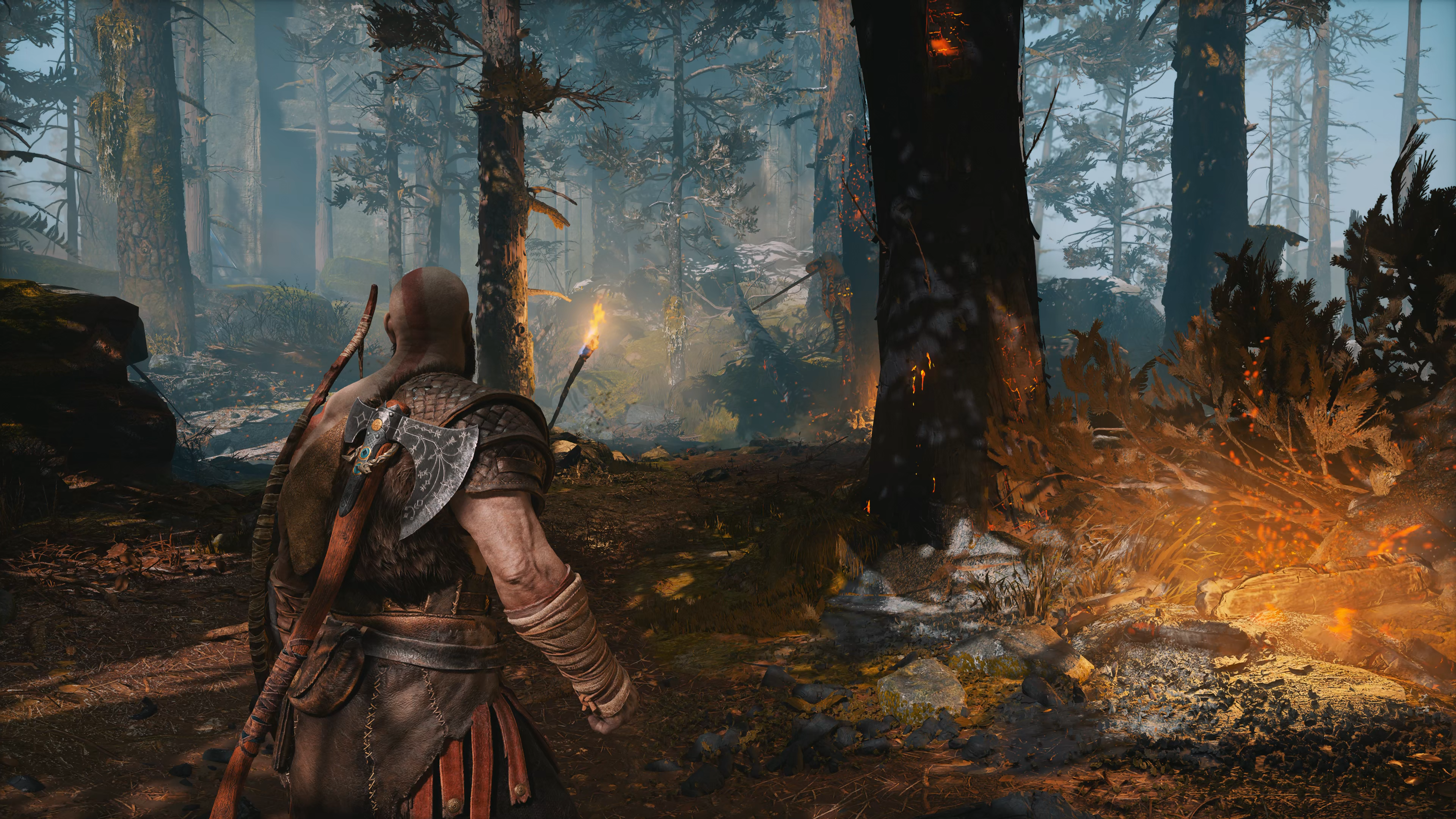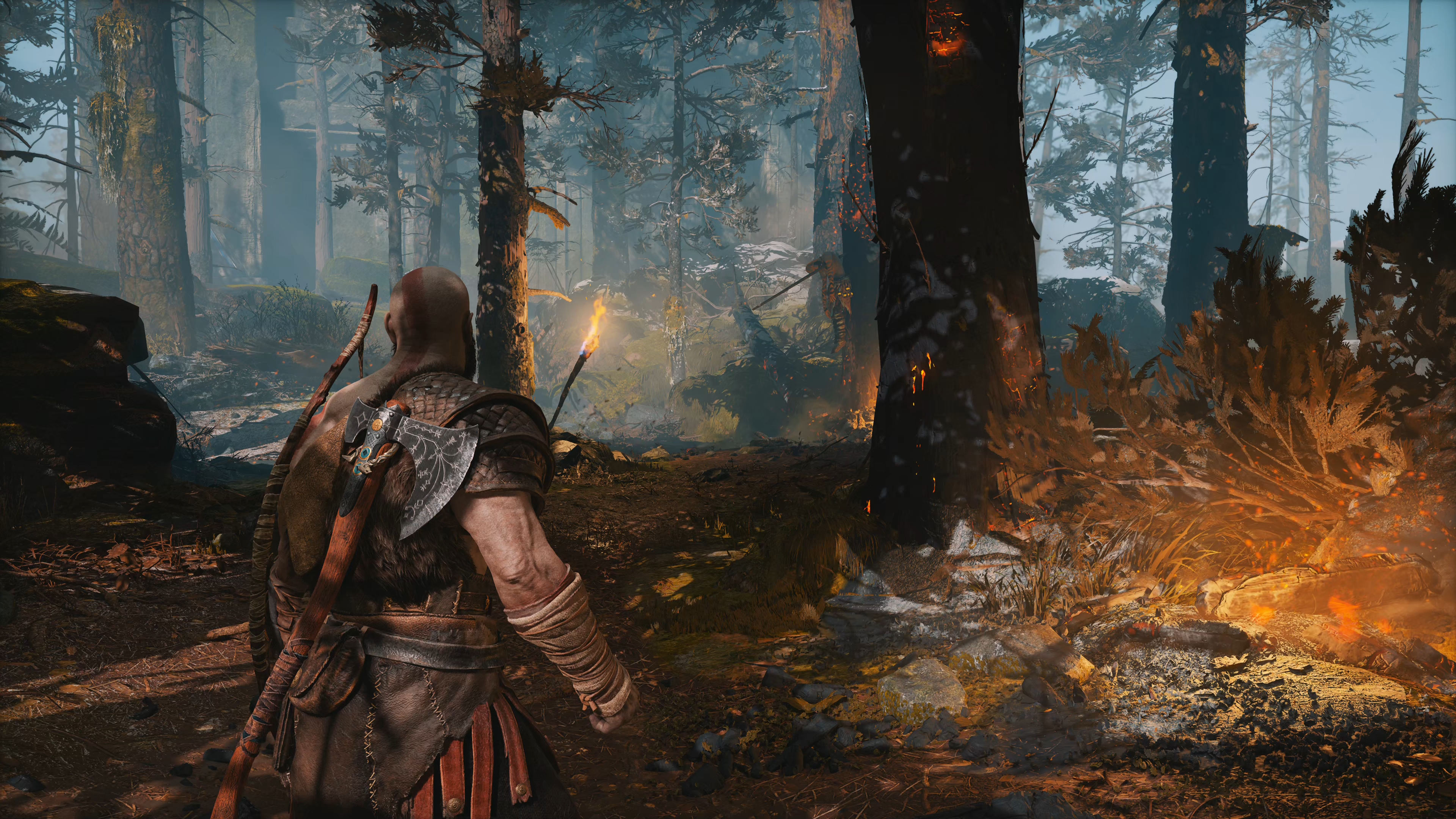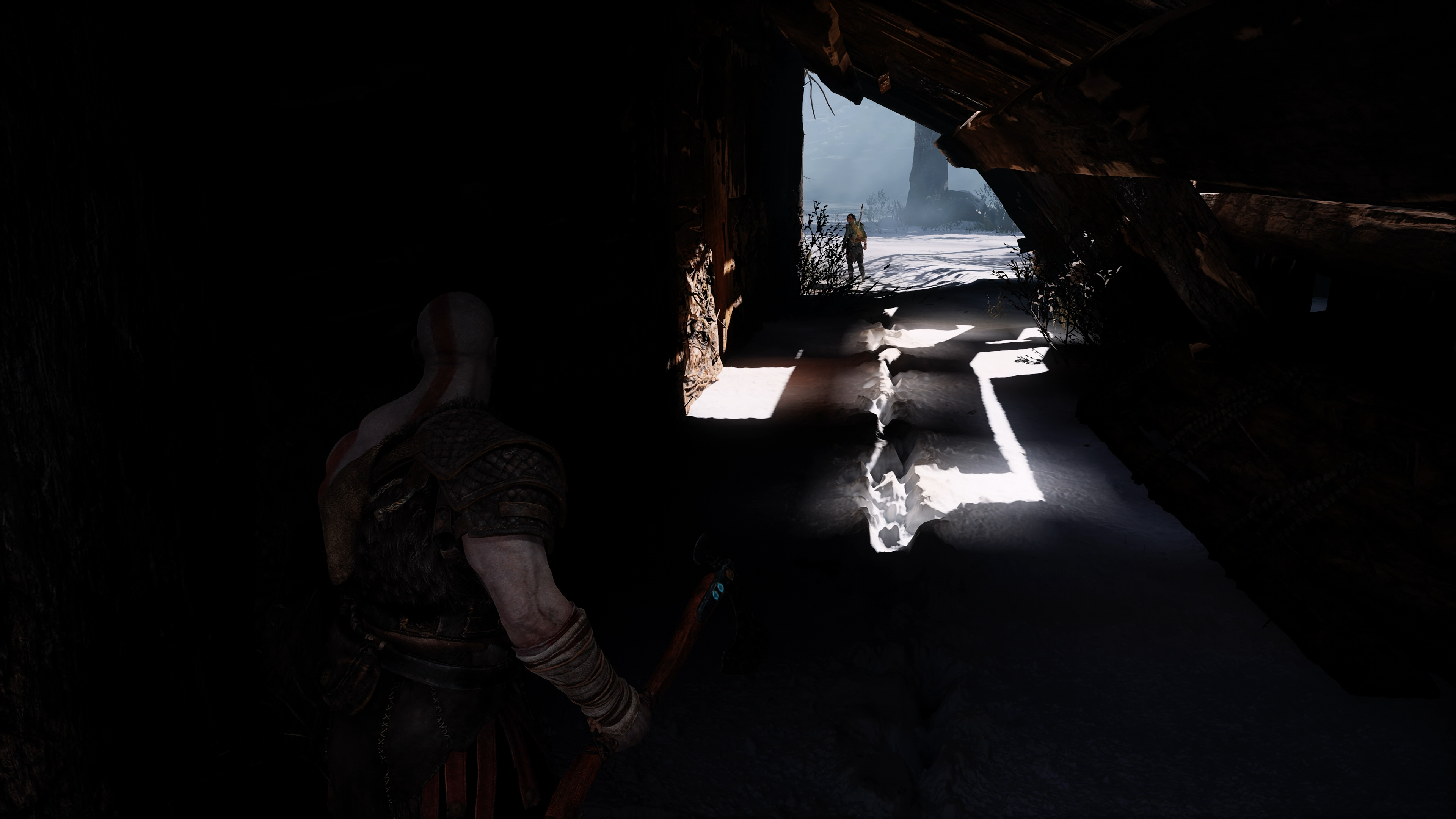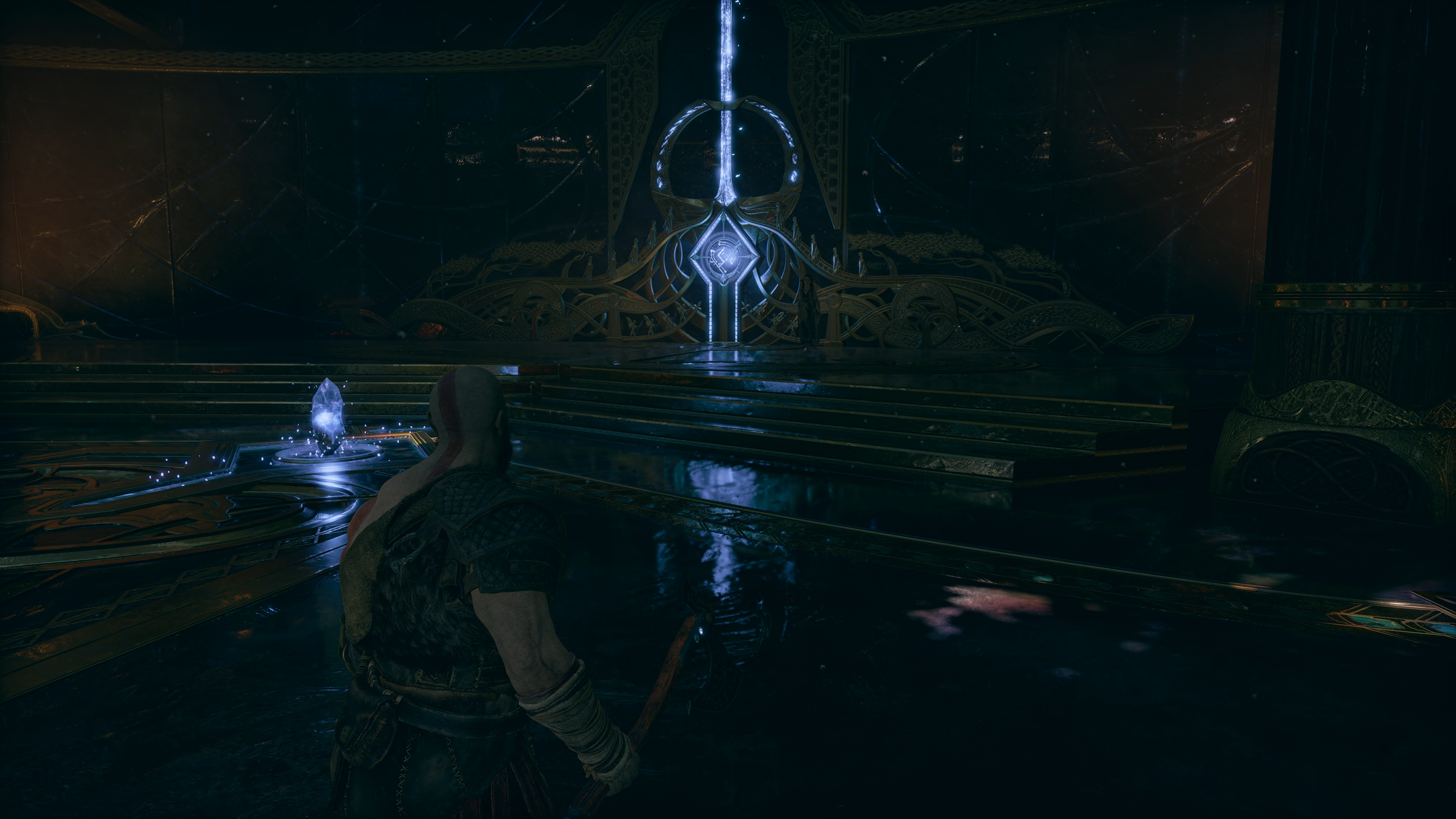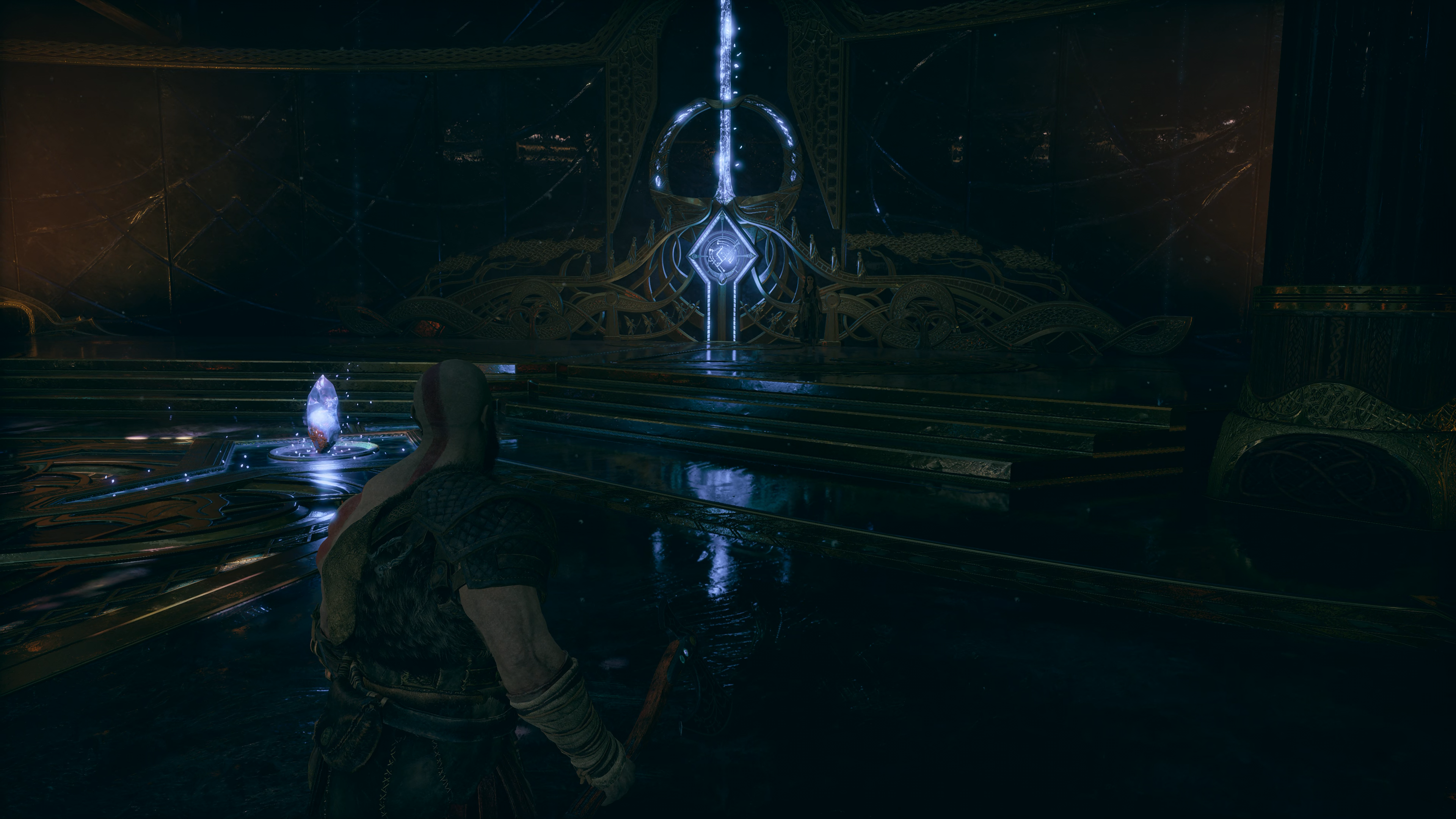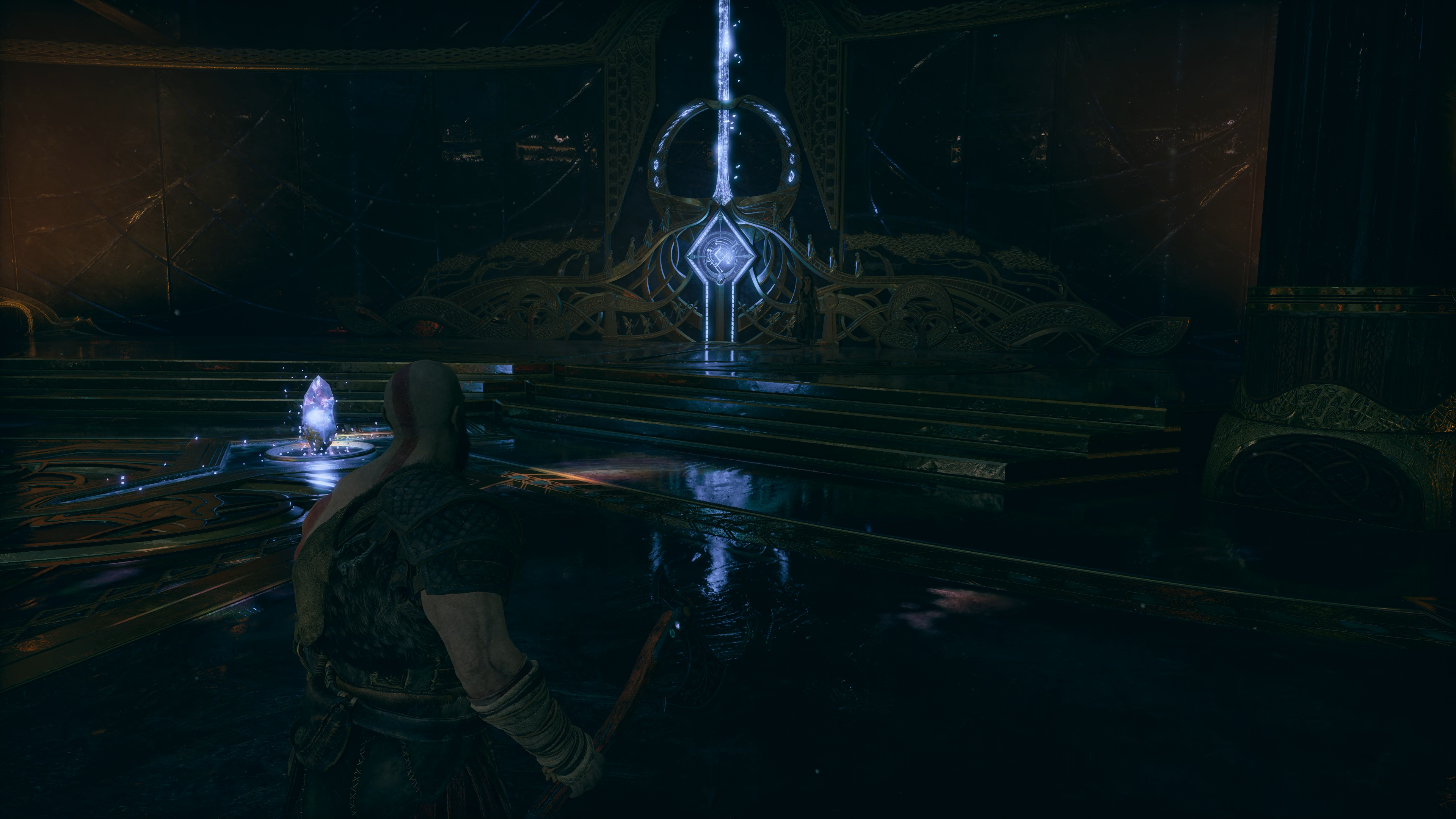There’s much to discuss here, so where to begin? My first contact with a PC game usually starts with the user interface and God of War holds up well here. The menus are simple, easily navigable, not overly nested, and work well with both mouse/keyboard and a controller. Various aspect ratios such as 16:10 and 21:9 are supported out of the box and the visual options are numerous and genuinely meaningful. Perhaps surprisingly, the game is running under DX11 and as far as I can tell, it does not have an extended shader compilation step and in-game stutter is kept to a minimum. The only notable omission is a field of view slider - which would have been tricky to implement due to the ever-moving camera in the game. However, that constant camera movement itself has an option to reduce its severity, which is welcome. PC also offers up a range of upgrades in the menus, even over the PlayStation 5 patched rendition of the original PS4 Pro game. Nvidia Reflex is implemented, where I saw an 11ms reduction in input lag when I tested using a DualSense controller (which the game natively worked with). There’s generally faster loading too, depending on your hardware. The biggest differences come from visual upgrades, starting with image quality and the removal of PS4 Pro/PS5’s checkerboard rendering. Artefacts including checkerboarding patterns on particles and general fuzziness on texture surfaces are gone on PC as a result. With the PC version, nearly all of these aspects can be improved upon with native resolution rendering using the game’s standard TAA or via DLSS. And yes, DLSS holds up beautifully, with some aspects of the presentation actually improved over native rendering. That’s quite impressive bearing in mind that DLSS performance mode runs with 50 percent of the pixel count of PS4 Pro’s checkerboarding solution: smart upscaling solutions have moved on dramatically and it’s great to see Sony Santa Monica bring those latest advances to its PC ports. From there, we move onto improvements in graphical fidelity, where God of War also impresses. First of all, it’s heartening to see that the various graphical options have an ‘original’ option, meaning their quality matches the PS4 original. This effectively sets a baseline of sorts for those with more capable hardware to push harder and further. To my eye, the most obvious upgrade are the shadows. On the console game, sun shadows can be displayed at a pretty low resolution, sometimes giving a blobby appearance. Increasing shadow quality diminishes this effect, reduces flickering and even aids ground detail. The second most obvious visual upgrade is geometry quality - meaning higher detail and more rounded objects than the console original. That is a nice bonus, but what’s impressive here is that the PC version is also more stable in motion as a result. There’s far less obvious pop-in closer to the camera as you walk and run through the game. Improvements to ambient occlusion are also worthwhile, better grounding objects in the environment, and introducing a bounce light element too. Beyond that, volumetric fog quality can be improved, reducing aliasing. Screen-space reflection quality is also improved, boosting resolution and again, reducing flicker. This one may be harder to notice as generally, God of War does not feature many reflective surfaces using the effect, but when they do appear, the improvement is clear to see. Finally, texture quality also sees improvement compared to the PS4 Pro original, primarily as the original art is no longer processed with checkerboard rendering. However, improved anisotropic filtering also aids the presentation. There is also a texture setting which increases the resolution of streamed-in textures at a distance - but in general, this upgrade is not as dramatic as one might imagine. Optimised settings? You can stick to the ‘original’ presets to replicate the quality set by the console game, but I tend to think that there is a better bang for the buck mix available. For example, dropping shadows from ultra to high improves performance by a massive 48 percent. Reflections are also expensive: dropping from ultra+ to ultra boosts frame-rates by nine percent, while the high setting takes that up to 16 percent, so high is my pick. After this, the model quality setting offers a sizeable performance increase when moving from ultra to high, improving performance by nine percent. Beyond that, I recommend selecting the original setting for atmospherics and the high setting for ambient occlusion. Ultimately, what you end up with is better-than-console quality, but the hit to performance is not actually that pronounced compared to the ‘original’ preset. More of an issue is VRAM. God of War ships with a 4GB minimum memory requirement and I’ve measured up to 5.5GB utilisation at 1080p with ultra textures, rising to around 7.2GB at the maxed native 4K. You can lower your GPU’s VRAM footprint by dropping the texture quality setting down to original - and that’s fine as there are minimal improvements visually, foliage quality apart. In general, I’d recommend remaining at the original texture setting, even if you have a 6GB card. If you’re at 8GB or higher, you should be fine with max textures at any resolution. Using an RTX 2060 with textures at original quality, I found that optimised settings could improve performance by 40 to 50 percent compared to running everything at the highest level - with a barely noticeable drop in visual quality (far-off shadows apart - ultra settings can be transformative here, but the associated cost is very, very high). Lower-end GPUs? Pre-release messaging suggested a GTX 1060 for 1080p30 performance - somewhat alarming bearing in mind that this class of GPU is far more capable than PlayStation 4, which operates at the same resolution and performance level. So what’s the score here? When testing the game at original settings at 1080p on the GTX 1060, I found frame-rates were actually closer to 60fps instead, dropping to 50fps in heavier scenes. Radeon RX 580 performance is more problematic, with far more variance. The problem is reduced when using a more capable CPU, suggesting to me that we may be encountering problems with AMD’s sub-optimal DX11 driver. Moving onto more capable cards, 1440p with optimised settings is fine for an RTX 2060 Super or AMD Radeon RX 5700, though again, Nvidia has the advantage, with the DX11 driver again causing some problems for the Radeon card. 60fps on the AMD offering is right on the cusp at some points. I’d really like to see this situation improved for users of Radeon GPUs. The CPU requirement is relatively light for PS5-class 60fps gaming. Based on my testing, the game seems to max at 160fps, limiting top-end testing but the mainstream favourite - the Ryzen 5 3600 - seems to run at between 100-120fps, with some frame-time stutter. Moving up a class to the Core i9 10900K, it sustained 160fps for most of the duration. However, there are clear areas of the game where God of War seems to be background-streaming new environmental data, causing frame-time spikes that makes a 60fps lock challenging on the Ryzen and a 120fps lock similarly problematic for the i9. Reducing shadow and model quality settings can help to mitigate this occasional slowdown. In general, if you have an RTX GPU, you should use DLSS. Even a base-level RTX 2060 can effectively deliver a 4K60 experience with DLSS performance mode, which looks significantly better than the checkerboarded experience on PS4 Pro. If you can’t use DLSS, consider the game’s internal resolution scaler - it uses temporal reconstruction, which AMD FSR (also supported on any GPU) does not. Check out both options to see which you prefer. DLSS is my pick for RTX users, but there are some very minor visual issues, such as jitter on snow deformation. Rarer still are some ghosting issues on high contrast foliage. By and large, the quality and performance wins here easily outweigh the occasional artefacts. In summary, the PC port of God of War is spectacularly good, with meaningful graphical options that scale the game beyond the original PlayStation experience. GPU performance is generally good, but I would like to see improvement on the CPU side - particularly on background streaming and on AMD’s DX11 driver. My fingers are crossed that these issues can be improved via patches. Ultimately, the port is fantastic but the fact is that Sony’s first-party magic still shines through, despite the fact that God of War launched on PS4 almost four years ago. Back in February 2021, we revisited the game on PlayStation 5 - essentially the PS4 Pro game running unlocked - and years on, it was still an absolutely brilliant experience. It still is, and today, the enhancements are even more pronounced on PC. I highly recommend checking it out.
